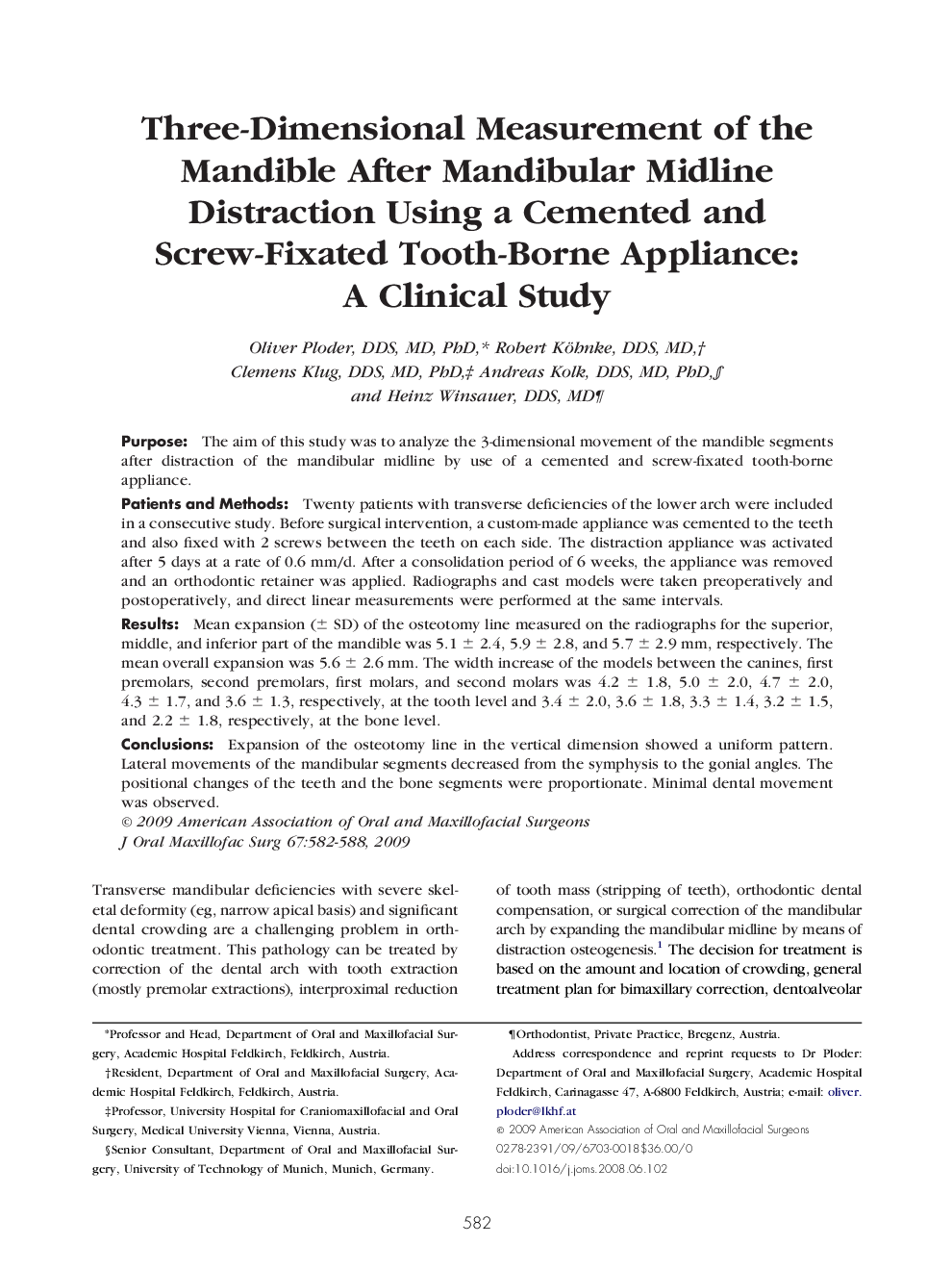| Article ID | Journal | Published Year | Pages | File Type |
|---|---|---|---|---|
| 3157365 | Journal of Oral and Maxillofacial Surgery | 2009 | 7 Pages |
PurposeThe aim of this study was to analyze the 3-dimensional movement of the mandible segments after distraction of the mandibular midline by use of a cemented and screw-fixated tooth-borne appliance.Patients and MethodsTwenty patients with transverse deficiencies of the lower arch were included in a consecutive study. Before surgical intervention, a custom-made appliance was cemented to the teeth and also fixed with 2 screws between the teeth on each side. The distraction appliance was activated after 5 days at a rate of 0.6 mm/d. After a consolidation period of 6 weeks, the appliance was removed and an orthodontic retainer was applied. Radiographs and cast models were taken preoperatively and postoperatively, and direct linear measurements were performed at the same intervals.ResultsMean expansion (± SD) of the osteotomy line measured on the radiographs for the superior, middle, and inferior part of the mandible was 5.1 ± 2.4, 5.9 ± 2.8, and 5.7 ± 2.9 mm, respectively. The mean overall expansion was 5.6 ± 2.6 mm. The width increase of the models between the canines, first premolars, second premolars, first molars, and second molars was 4.2 ± 1.8, 5.0 ± 2.0, 4.7 ± 2.0, 4.3 ± 1.7, and 3.6 ± 1.3, respectively, at the tooth level and 3.4 ± 2.0, 3.6 ± 1.8, 3.3 ± 1.4, 3.2 ± 1.5, and 2.2 ± 1.8, respectively, at the bone level.ConclusionsExpansion of the osteotomy line in the vertical dimension showed a uniform pattern. Lateral movements of the mandibular segments decreased from the symphysis to the gonial angles. The positional changes of the teeth and the bone segments were proportionate. Minimal dental movement was observed.
